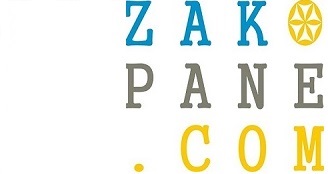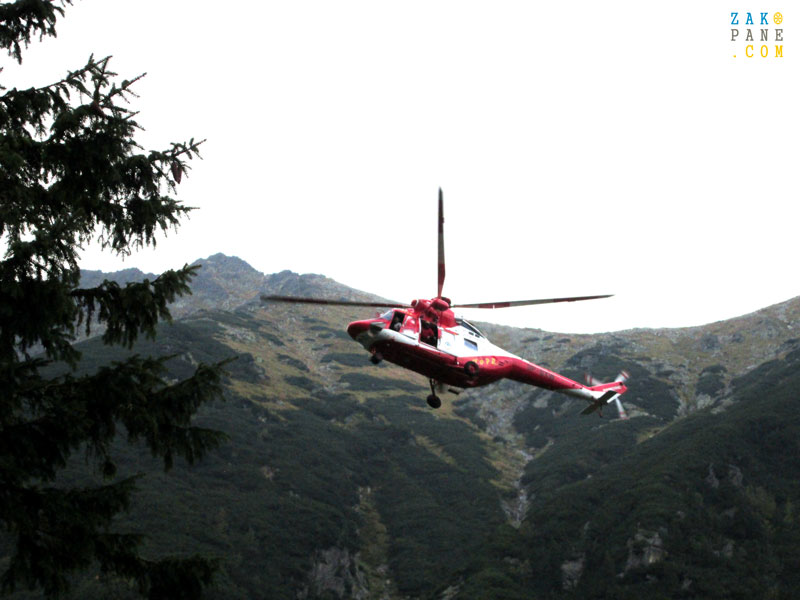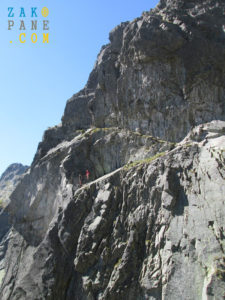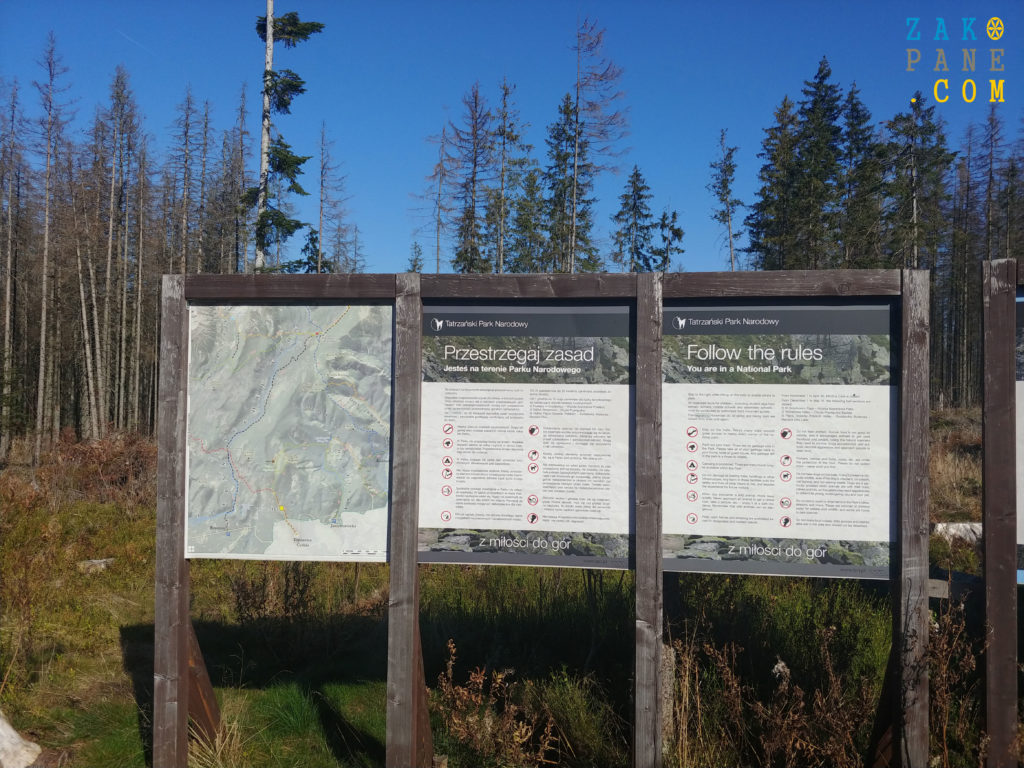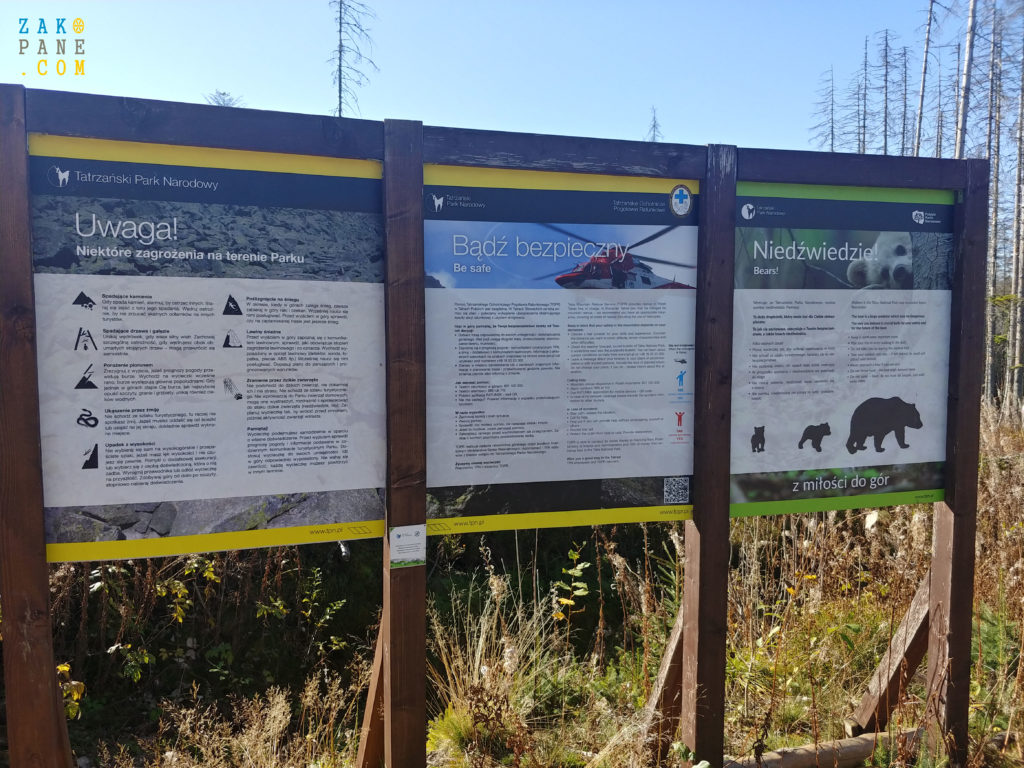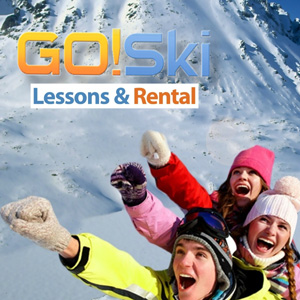As many ascents that many descents.
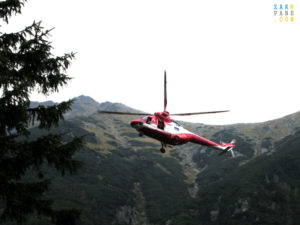
TOPR helicopter in action above the Morskie Oko Lake. Its appearance always arouses sensation, but we shouldn’t disturb rescuers with their work. Stay away form place of landing.
The wish, which is in the title of this text, usually is given to Himalayan mountaineers, who decide to conquer the highest mountains of the world. Families and friends of climbers know that success can be celebrated only when fearless enthusiasts of crossing the barriers of the endurance of the human body will find themselves safely in the base, in one piece and healthy. In the Tatras, there are not such extreme conditions, but these are mountains in some areas difficult enough that above wishes are adequate. Many people are so captivated by the vision of themselves at the top of the coveted mountain that they forget about basic security principles. Thus, not everyone manages to return from the mountains, many return, but assisted by the mountain emergency service, ending their trip in a hospital. In this text we do not want to scare you. However, knowing – and believing – that all of us would like to have a happy end of each trip, we will try to look at the topic of safety in the mountains as much as possible, give some advice, as well as some caution. With the hope that our modest contribution to expanding the awareness of people going to the mountains will make the title wishes always fulfilled.
Part one – before the trip, or the trip begins at home.
So, the decision was made – we’re going to Zakopane! Great! We do not know exactly what we will do there, it depends on the weather, we will visit some museum, of course Krupowki, apparently also Koscielec is cool, it is worth to jump on it, as the weather will be good … Stop. For anyone who knows the mountains, it sounds like a joke. But unfortunately, let’s admit, in many homes this is how planning a stay in the mountains looks like. Let’s make it clear – if we intend to go on any trip outside the town, we will need at least a map and sports shoes. The basic feature of the shoes is an anti-slip sole, how important it is, we will check on the first path. If we want to go to a terrain higher than the Tatra valleys, we must have a backpack full of necessary equipment and at least a basic conditioning preparation. Thinking about it after arriving to our mountain destination is a key neglect.
First of all, we must have a working phone with a long-lasting battery and/or power bank.
We discussed the issues of clothing and footwear that is suitable for walking in the mountains in the article “Tatra Fashion Review”. Let’s just remind here – in the mountains the weather changes often and unpredictably. During one trip, you can both burn in the sun and reliably freeze. You must have layered clothing and definitely by the type of sportswear not casual. Irrespective of the season, a cap, gloves and sunglasses with a strong filter will be useful. Remember that the temperatures checked for the town of Zakopane are not like those in the mountains – with the altitude the temperature drops sharply, the wind is stronger there, the sun in turn burns harder. And certainly the basis is footwear, which we should try before we set out on the trail, Do not buy them at the last moment, in a hurry, in the first store where we find the promotion. We also have no reason to go to the mountains without a backpack. If we pack in a suitcase, no problem – but let’s put the backpack inside. And how about our physical fitness? Wherever we can, we use the elevator? We stand 10 minutes at the bus stop to go 400 meters to the next? Each bending down to the cabinet results in a knee sprain, and hanging out laundry makes our hands weakening? If the answer is “it’s like me!”, then unfortunately you need to work on your fitness, right now, at home in order to prevent an injury or more serious accident in the mountains.
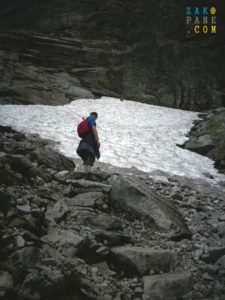
Trail to Przelecz pod Chlopkiem. Hurdling through frozen snow without crampons is not safe, but who carries it in August? Walking sticks can help a bit when we are not sure about the grip of the shoes.
Basic exercises
Unless we live in a mountain village, it will not be easy for us to prepare in natural conditions. Long walks, but on a flat terrain, will not give us the same as covering ascents. What can we do? Certainly walk the stairs. Walk up to increase endurance of the circulatory system, but also go down to develop techniques of going down without straining the knees and to strengthen the tendons of the feet. When cutting vegetables for a salad, alternately stand on your toes and swing on your heels, put your feet on the outer edges, shift the weight from one foot to the other. Sounds very simple but it will be useful on trails, where every stone will have a slightly different degree of inclination and our tendons will undergo a severe test. Do we want to try to climb the trail with chains? It may be useful to use a spreader bar in the door frame or exercise with weights. Let’s be aware that our life depends on the strength of our hands on routes like Orla Perc. Dropping the chain and falling into the abyss cannot end well. What else is worth exercising? Wearing a backpack. If we always transport our purchases by car and carry them in tote bags, let’s check how our spine feels when we walk two kilometers with a load of 5-6 kg or at least 4.
And what if I have a fear of heights or open space?
It is surprising how many people are discovering just in the mountains that they have the fear of heights. If we live in a big city, let us take the trouble to look from the skyscraper’s height to the street below. Do we feel dizziness, our heart is beating faster? Than not for us the mountains, valleys are should be enough. Let’s watch pictures and movies with mountains shrouded in clouds, fog – if such a view arouses anxiety in us, let us stay below. It is very likely that even during a trip to the gentler Western Tatras we will have to clash with such a picture.
Am I healthy?
Mountains are not only for healthy people being in a perfect shape. There are people with heart disease, convalescents after surgery, allergy sufferers and many others. It is important, however, to be sure that we have cured all injuries. Or at least, that if we suddenly feel pain in a recently broken or sprained limb, it will not be so severe that it will expose us to a fall or loss of balance. Yes, you can find pictures of people who have reached the top on crutches, but let’s treat it as extravagant and dangerous, not as an option. Similarly, if we have untreated hypertension, let’s think about whether it’s worth taking a risk. During the effort of climbing it will increase for sure.
After this introduction, intended for people who have never dealt with mountains, let’s go to the second part because finally we reached Zakopane.
Let’s make a plan!
Let’s assume that we already have the necessary equipment and we are in a good shape. For tomorrow they promise beautiful weather, so we have to move. Only the head hurts somehow, we feel drowsy. It’s normal. In mountainous regions there is much lower air pressure than in the lowlands. You just have to get used to it or maybe a headache pill will help. And get enough sleep, that’s important. So if tomorrow we want to go on a trip to the mountains, let’s not spend the previous evening sitting in a bar with music and good drinks. But it will be useful to go for shopping – if we do not have a map, it will be our first, most important purchase. Of course, we need to buy food and drinks – water, possibly isotonic, and if we have a proven, hermetic thermos, also tea. Attention, so-called Highlander tea, with the addition of cherry, rum or other alcohol, tastes great in the inn in Zakopane, but is absolutely not allowed to drink during the trip. In winter, the dilation of the blood vessels can cause frostbite, even with lethal results, in the summer it quickly goes to the head and we will stagger and fall over. When we have a weak head, even beer is forbidden. What to eat? Sandwiches, chocolate bars. Food is a matter of individuality, but it is definitely better to prevent stomach sensations and paying attention to very spicy, fat dishes, every which might harm us.
In our backpack for a mountain expedition should also be a first aid kit containing adhesive bandages, disinfectants, analgesic, ointment or gel for contusions, elastic bandage and medicines which we have to take regularly.
After shopping, it’s time to sit down with the map and think about where and which way we want to go. A lot can be found on the Internet on this topic, we recommend our guide of easy and slightly more difficult routes to start with. Most websites, blogs, as well as printed publications devoted to the Tatras are available only in Polish, so you will have to take some trouble with the translations. But even without a guide, we can plan an expedition just by looking at the map. Let us remind you once again – the color of the trail is not telling us about its difficulty. The scale, which is widely used in skiing, does not refer to hiking routes. In addition to the difficulty of the route, the second most important thing is the time the trip will take. Let’s check the time of the sunset, before the sun goes down we must safely reach the parking lot or a bus stop. Remember, to the time of the trip shown on the map or a guide we should add half or even an hour for taking pictures, resting or changing the clothes.
Let’s add an hour to a stop at the top – on crowded trails, sometimes you have to wait your turn to stand on the highest peak, we will also definitely take pictures and just enjoy our presence on the top. We can add another hour for a longer rest, and even a nap in some secluded place, if we feel very tired. The stay in a shelter usually also takes a long time – even if we do not lounge with a great feast, it can happen we will stand 15 minutes in the queue to the toilet. Let’s also take into account that the times given on the maps and on the signposts in the mountains are for people in good physical shape. If we know that we walk a lot slower, we must add more time. And finally, counting this way we will reach the starting point, having a calculated time about which we must go out on the trail. In the morning, rather, we will not be able to pack and be ready in less than one hour, let’s also check the departure times of buses if we choose this option to reach the route itself. Or find out how much time it takes to drive by car, including traffic jams, for example on the road to Palenica Bialczanska, where the route to Morskie Oko comes from. When planning a route, let’s also find out earlier when the last bus leaves towards Zakopane – in November, for example at Palenica, it will be 17:20. Why is time planning so important? It’s easy – in the period from March 30 to November 1 you are not allowed to stay on trails at dusk (this ban is also commonly broken, but we have to take into account the fine). And of course, moving around the mountains in the dark is simply dangerous, even if we have a flashlight, everything looks different in the dark. We are also exposed to encounter with wild animals, night is their time.
Here we need to mention a very important thing – different variants of the trip. You have to plan it in order to be able to shorten the route in the event of a sudden deterioration of the weather or our well-being. It’s good to have at least one shelter on the route, where we can, for example change into dry clothes when we will get drenched, or at least warm up.
Part three. In the mountains.
So, we are already in the mountains, we march briskly covering the first hills. Maybe we even managed to keep the planned time. Wait, we are on our way but have we read the information boards of the Tatra National Park? They stand at every entrance to the park, at the ticket offices. Everybody should definitely read them. Not only because when buying a ticket we agree with the provisions of the park regulations and we are obliged to pay a fine for breaking it, when the park guards will catch us with a wrong behavior. Also because the boards inform about important security rules in Polish and English. There are also pictograms, understandable even for children. We will find there information on how to behave in the event of a meeting a bear, how to call for help in the event of an accident and many more. Let’s devote there a minute or two to reading. And follow the instructions. And then we can move. Just a moment – most people ignore warming up but this is very useful. None of us want to strain the Achilles tendon at the first steps on a bumpy path uphill. A moment of warming up exercises – and we’re going!
On the trail.
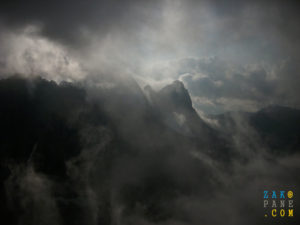
If you are feeling nauseous with fear when you look at this picture, do not go into high mountains, especially when it is cloudy – during the day it may get worse. In fact, sometimes you cannot see anything except the gray-brown fog.
We wrote a lot about it in the text “Tatra savoir vivre”, but we will write once again about the most important principles of security. First of all, let’s adjust our pace to skills and to the state of the trail, do not rush if we feel uncomfortable. Secondly, let us be careful not to overheat or expose ourselves to excessive solar exposure. Thirdly – remember that around us are other people who also want to safely reach the end of the route, so do not knock down stones, do not push anyone, do not put pressure on anyone to overcome a difficult part of trail, because we do not want to wait. If we happen to knock down a stone, warn the people below with a loud shout. Fourthly – no bravado. It is about drinking alcohol while wandering, about standing right on the precipice, to take a selfie, or skipping the trail, walking on neighboring rocks, or staying on the ridge until the night, to admire the Milky Way from the perspective of Orla Perc – any such behavior can make this adventure the last one in our life. Fifth – let’s react to weather changes. Hearing the coming storm, let us leave the exposed area as soon as possible. Do not go into a difficult area when we feel that the shoes are slipping on wet rocks. Let’s end the trip when we’re freezing. And just do not go on the trail at all, if the wind is strong, or the messages say about the flood, landslips, mudslides, destruction. Be sure to take a moment to check the current information on the conditions on the trails on the page www.tpn.pl (only in Polish, to get information in another language, we must use a translator – the tab “Komunikat turystyczny” means “Tourist announcement”). Let’s take these tips seriously. In winter, let’s approach the avalanche messages with respect, we will find it under “Komunikat lawinowy”, nobody sets the 3rd or 4th degree of danger out of pure malice, to make our holidays unpleasant – it’s about our lives and our health. The same applies to the closure of hiking trails. It is only the concern of TPN employees that at the moment you cannot, for example, walk along the route between Swinica and Zawrat, this trail is really falling apart, big boulders are falling. Closing messages, alternative routes are available in the park, (f.ex. at the ticket office in Kuznice), and on the TPN website on the Internet. We can always ask the hotel staff to check or translate this information for us – in some of them we will find these posted in the main hall. You cannot explain ignorance. Avoiding bans, going out of the way, ignoring bad weather – it’s just irresponsible behavior.
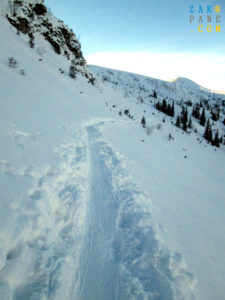
Walking along such a narrow path it is very difficult to pass another person. Going on the edge below (the path has a width of 35 cm) we can skid down, taking a step on the edge above – start an avalanche. Here, on the hillside of the little Koscielec died Mieczysław Karłowicz, an outstanding composer and mountaineer. Let us keep maximum caution and, above all let’s move slowly.
And what about the protection?
From time to time, you may come across a suggestion to go to the mountains wearing a helmet that protects your head in the event of a fall or stone impact. Usually such equipment have mountaineers climbing off the trails. Of course, they are also secured by harnesses and ropes. On “ordinary” trails, even on Orla Perc or Rysy – these are unnecessary things in practice. You can sometimes see someone who diligently snaps carabiners on chains, but this does not significantly increase security, but irritate people waiting in queue to cross over some difficult place. Falling stone can hit us just in the knee, or the nose and the helmet will not help much. And we ourselves, falling, can also damage the spine, limbs … In fact, on difficult routes you simply have to focus and do everything not to slip. It’s the best insurance. It is worth eliminating everything that bumps and can catch on rocks, which constricts movements. Put the camera in your backpack pocket, do not carry it in your hand, do not hang it around your neck. Fasten your long hair. If you want to give something to someone, do not throw it at a distance. And, most importantly, even in a completely flat valley – while walking, always look under your feet. We want to look around, take a picture, take something out of the backpack – stop. We can parade with raised head on the main pedestrian street in the city. But in the mountains no one will suspect us of depression, because we walk with the eyes fixed on the ground.
Speaking of stopovers. Do not make them too often and too long. The body uses a lot of energy to start up and the least we struggle with a constantly elevated heart rate and warmed joints and muscles. During the stopover longer than one minute we return to the starting point, we have to enter the rhythm again. The optimal stop is about 20 seconds, enough to reach for a sip of water from the bottle, wipe the nose, and apply another layer of protective lipstick with a filter. Or take two photos. Let’s also learn to rest while walking, focusing on the breathing, rhythmical, synchronized with the steps. Let’s not flounce – once almost running, sometimes standing almost in place and barely moving our legs. Do not lose the energy and strength of the muscles for too great steps forward, for stamping. Why are we writing about it here in the article on security? Because improper energy management often ends in serious weakness and even heart problems. Connecting it with ambition and desire to reach the goal at any price, we will find the answer to the question, where people need so often help of rescuers in cases of fainting.
We’re calling for help.
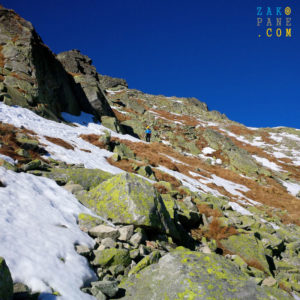
Autumn on the southern slope of Kozi Wierch. The burning sun melts a thin layer of snow and even crampons will not help much. Maybe you do not have to go to the very top?
Even if we try to avoid an accident, something unexpected may happen. Someone else is dropping on us a rock, the rock that seemed stable, will suddenly break away. The heart or your body may give you warnings they are tired or yesterday’s fat supper in the inn will harm us. Every year, hundreds of people need help in the Tatras, they are unable to return home on their own. To call for help from TOPR we will need a charged cell phone and this is one of the most important things in the Tatras. The 112 number it is valid in the same way as in the whole country, and you can get directly to TOPR by dialing the 985 emergency number. And +48 601 100 300 as well. We can also install a free “ratunek” (rescue) application on the phone, which also allows rescuers to precisely locate us in the event of an accident. We can read more about the application on the website www.ratunek.eu. By the way, calling for help, let us try to give the place where we are located as accurately as possible, hence the knowledge of topography and map is necessary. If we want to get some idea of what can happen to us, or to the person we are going with on a trip, read the TOPR chronicles randomly. That is the Tatra Volunteer Ambulance Service. It is an institution that enjoys the highest respect in Zakopane, as well as rescuers who help. The mere presence of such a security service calms and uplifts, in the event of a failure we are not alone. But beware, this should not make us take more risks, because “TOPR will save us”. TOPR is not some nameless army of robots, they are a living people who risk their own lives and health to save others. Very often, without their help, the injured would have a huge problem with reaching down, health and life depend on their quick and efficient action. But often accidents would not happen at all if somebody’s bravado and irresponsibility did not lead astray. TOPR does not assess, does not classify cases, does not choose whom to help, and who deserves to be in trouble. They will help everyone. It is important, however, do not abuse it.
We will also mention here that TOPR does not charge for rescues, we do not have to be afraid of being charged for an unjustified call. But on the Slovak side of the mountains the case looks different, HZS issues staggering bills, so it is worth buying insurance there which is not expensive. You can do it online or in one of the travel agencies.
Before help arrives.
Basically, the rules for first aid or a rescue in the mountains do not differ much from those in the lowlands. It is worth knowing them even before heading to the trail. In the mountains, it is worth paying particular attention to not attempting to move someone who for example, fell from a height, because most likely he has a damaged back and it is easy to do more harm. If someone who has fallen, refuses to take help from rescuers, make sure he is not alone and that he has not suffered a concussion, which may be suspected when nausea or unconsciousness occurs. Not many people have thermal film that protects the body against hypothermia while waiting for help. But, if we have some space in the backpack, it is worth having it in the equipment, it is very useful. NRC film can be purchased, for example, in a sports store. Of course, it is a cliché to remind that we do not leave the victim alone – even if it is a stranger. If it’s dark and we have no way to go back, or we freeze ourselves while waiting with the victim of the accident, rescuers will also help us safely leave the difficult terrain.
In the end, we recommend the reading which summarizes and supplements our information. The article about safety comes from the Tatra National Park and it is also worth reading. It is located at: http://tpn.pl/pl/pdf/1575 in Polish, so you will find the most important and interesting parts of it translated below. And then – let’s enjoy the mountains on the scale of our abilities and skills and as much as the current weather will allow. If we do not find the right time and perfect weather, let us remember the most important thing – that the mountains are standing here today and will be also here in the next year. What if we feel that we will never come back here and this is the only opportunity? It does not matter, most of us will not see a thousand other places in the world worth visiting but we will probably see others, just do not divest ourselves of this chance.
Anna Markiewicz
Worthy of notice – from the TPN article:
Never take a trip alone. Leave information about the planned route and return time.
In practice, even in shelters, no one collects information from all tourists, only from mountaineers. But we can always make an appointment on the phone after returning with loved one, who will alert the service, if we do not get back at the appointed time. On the other hand, let’s choose this person carefully, someone who will not make unnecessary panic if we are late with the phone 15 minutes. And of course, let’s have a charged phone. If we are afraid that the battery will not stand, save the number on the sheet, even on the hand and when we meet someone, do not hesitate to ask to use his phone. It is worth mentioning here that when going to the mountains we should have documents confirming our identity with us. And, in an easy to find place, the details of the person to be notified in case of our troubles. The provisions of the GDPR do not make life easier in this aspect, but do not worry about it and just have this information with us. Just in case. And when it comes to lonely trips? Thousands of people choose this form of communing with the mountains as the only one that gives them real respite and contact with nature. So we can only advise – for the first trips, let’s go with someone who knows the mountains, with a friend or a guide. Only when we gain confidence, we will feel at home in the mountains – it will be time for lonely trips. (annotations AM)
Do not go to the top during strong winds. Stay in the shelter and safely from his windows see the battle of the elements. In winter, watch where the wind is blowing. When it calms down, you will be able to foresee where dangerous cushions of snowing and overhangs threaten the descent of an avalanche. Remember that avalanches from knocked snow are easily cut even after incidental snowfall, which is accompanied by wind – for example after the September weather breakdown.
Wandering through the trails enveloped in fog, try to remember the characteristic details. When we lose the path, try to go back to the last place with a known location after your tracks, left on the snow, or, recognizing the places you passed before. The help can be a compass or a GPS receiver connected to an accurate map – but these methods are only good for people who know the topography of the Tatra Mountains perfectly.
Let’s remember that the avalanche risk level announced by TOPR is only information about the statistical probability of such an event. This means that when choosing to be in the snowy Tatra Mountains, you must always take into account this danger. The certainty that we will avoid avalanches is never there!
Safe walking with crampons is a skill to learn. Just owning this equipment is not enough. The most insidious is “young snow” – from a few to about 30 cm of fresh, unbound snow usually falling in October and November. Often it lies on frozen grasses or on an ice top made of freezing rain.
When the storm surprises us, you cannot hide into wet gullies or under rock cliffs or lean against the rock. You should sit on the backpack and, curling up your legs, curl up “into a ball.” You should also protect yourself from rain to avoid hypothermia. A group of tourists should scatter – do not sit next to each other!
Slipping on a flooded slope or a patch of snow. In summer, we often have to traverse the patches of icy snow, which in many places lasts throughout the year. When overcoming them, be careful, slipping may result in a fatal fall. The danger increases when instead of wearing shoes with non-slip sole, we go to the mountains in slippery “sneakers”. It is unacceptable to try to ride on summer snowflakes. Such entertainment in the best case ends with skin abrasions and bruises.
